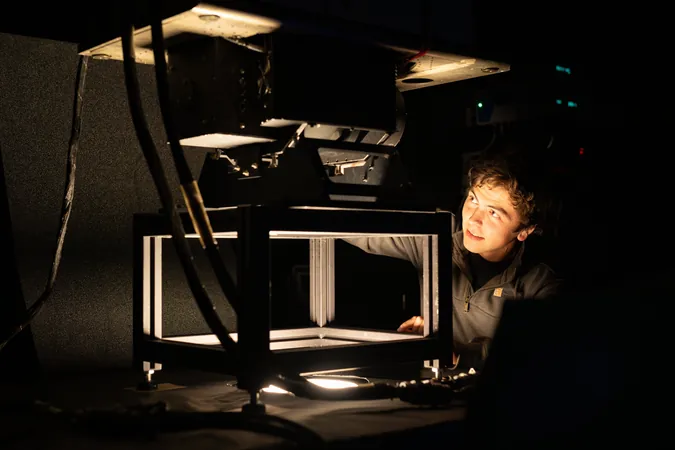
Inside NASA's Calibration Lab: The Secret Behind Accurate Data
2025-06-12
Author: Li
Welcome to NASA's Calibration Hub
Nestled in Silicon Valley, NASA's Ames Research Center is home to a cutting-edge facility known as the Airborne Sensor Facility (ASF). This lab plays a pivotal role in enhancing our understanding of our planet by ensuring that the instruments used in aerial research are meticulously calibrated.
Mastering the Art of Calibration
Imagine tuning a piano before a concert—a crucial step that ensures every note is pitch-perfect. Similarly, the experts at ASF serve as the 'tuners' for the advanced instruments mounted on research aircraft. They use a collection of sophisticated tools including lasers, mirrors, and an innovative device called an integrating sphere—a hollow sphere that emits a controlled amount of light—to ensure that all instruments deliver pinpoint accuracy.
The Power of MASTER
Among the impressive array of instruments is the MODIS/ASTER Airborne Simulator (MASTER) spectrometer, developed in collaboration with NASA’s Jet Propulsion Laboratory. This powerful spectrometer is capable of dissecting light into its individual wavelengths, allowing scientists to glean vital information about various mediums, be it atmospheric components or surface materials.
Calibration: A Crucial Tune-Up
Each of the 50 distinct spectral channels within the MASTER instrument is akin to a specific key on a piano, each requiring individual attention for optimal performance. By aligning the spectrometer’s sensors with light projected from the integrating sphere, the team can verify the accuracy of the instrument’s readings and make any necessary adjustments. This rigorous calibration process is essential to guarantee that each data point collected is not just precise but also reliable for scientific research.
Why Calibration Matters
Accurate calibration can mean the difference between groundbreaking discoveries and misleading data. In the challenging field of Earth observation, where every detail counts, NASA’s commitment to precision ensures that scientists and researchers can trust the data generated by these advanced instruments, paving the way for significant advancements in environmental understanding.


 Brasil (PT)
Brasil (PT)
 Canada (EN)
Canada (EN)
 Chile (ES)
Chile (ES)
 Česko (CS)
Česko (CS)
 대한민국 (KO)
대한민국 (KO)
 España (ES)
España (ES)
 France (FR)
France (FR)
 Hong Kong (EN)
Hong Kong (EN)
 Italia (IT)
Italia (IT)
 日本 (JA)
日本 (JA)
 Magyarország (HU)
Magyarország (HU)
 Norge (NO)
Norge (NO)
 Polska (PL)
Polska (PL)
 Schweiz (DE)
Schweiz (DE)
 Singapore (EN)
Singapore (EN)
 Sverige (SV)
Sverige (SV)
 Suomi (FI)
Suomi (FI)
 Türkiye (TR)
Türkiye (TR)
 الإمارات العربية المتحدة (AR)
الإمارات العربية المتحدة (AR)